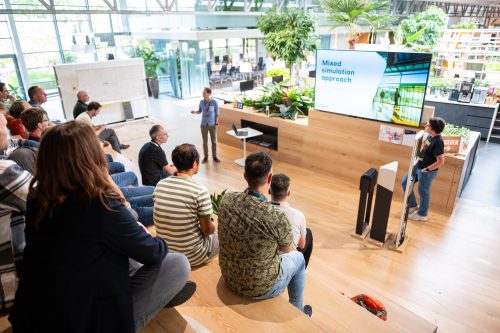The Corporate Sustainability Report Directive (CSRD) mandates that companies under European legislation transparently report on their handling of sustainability related issues. Companies have the discretion to select for themselves the subjects they deem relevant based on their specific 1) impact and/or 2) major opportunities/risks.

On January 5th, 2023, the CSRD came into force. Companies in the EU will have to apply the new rules in the 2024 financial year, for reports due in 2025. If you are a large company (>500 employees) or a public-interest entity, you will have to comply with the CSRD requirements by 2024.

CSRD is a reason to start thinking about your own impact; your partners might ask for this as well. You can begin by gathering data about your current operations to gain relevant insights. This involves formalizing sustainability practices and developing policies to support it. For this, it is essential that businesses establish clear targets and define their sustainability ambitions. The impact of the CSRD is the necessity for UV businesses to develop and implement procedures to ensure compliance to the legislation.


What does it entail and how can UV businesses act upon it to create added value?
CSRD will increase awareness on sustainable water management, presenting an opportunity for the application of UV technology. This aligns closely with the goals of the CSRD, particularly in areas such as:

In terms of climate change, UV technology plays a crucial role. For climate change adaptation (E.1.1), UV water treatment ensures that water quality is maintained even when environmental conditions change. In terms of climate change mitigation (E.1.2), UV technology stands out for its efficiency and use of (renewable) electrical energy, reducing greenhouse gas (GHG) emissions. In a similar way, energy efficiency measures in UV driver technology help businesses reduce the overall carbon footprint.

UV technology contributes to reducing pollution in air and water (E.2.1-2.2). It can purify and cure substances without the use of harmful chemicals.
UV technology aids sustainable water management by addressing aspects like withdrawals, consumption and discharges (E.3.1- 3.5). This means that water is preserved and as such are marine ecosystems.

UV technology has a minimal operating impact (E5). The waste-free process aligns with resource-efficient and sustainable water policies. Extending the end of life of components (drivers and lamps) in UV systems also leads to a reduction of waste.
If companies have significant activities in the EU–including physical presence– and have a net turnover of 150 million euros ($ 161) for two consequent years, CSRD applies to them.

How is Nedap incorporating CSRD?
Nedap has set clear sustainability objectives. For our UV market, our focus is on creating more energy-efficient operations. Since we produce devices which are electrically powered, the lifecycle analyses of UV drivers revealed that energy use has the most impact in the total product lifecycle (>90%). Our impact is limited by the high efficiency design of the drivers. As a result, the exposure of Nedap drivers is significantly lower compared to other drivers in the market. In close collaboration with our partners, we will look at how we can further extend the lifespan of drivers, for example by creating more awareness about the optimal temperature in installations.
My tip? Don’t sideline CSRD to a lone department. Make it a team sport. Involve diverse minds from across your organization. Focus on what matters for your sustainability strategy. Remember, CSRD isn’t just a mandate – it’s your ticket to achieving real sustainability goals.

The CSRD requires companies to provide information on their energy consumption. Nedap’s UV technology aligns with the CSRD goals by optimizing energy usage. Our UV lamp drivers are designed to be energy-efficient, which can help reduce the overall energy consumption of the system they are part of. In concrete:

Andijk, the Netherlands, is home to the world’s first integrated membrane and UV peroxide advanced oxidation plant. The drinking water facility produces 120 million liters a day. The state-of-the-art UV installation is powered by Nedap’s sustainable UV lamp driver technology.
The stepless dimming of the UV lamps by Nedap drivers ensures extra energy savings and prevents unwanted (chemical) by-products. Nedap technology contributes to significantly reducing the electrical losses in the installation and the electricity network due to high efficiency, high power factor, and very low harmonic distortion (THD).
Nedap is dedicated to reducing our environmental footprint through smart driver technology that meets current regulations and anticipates future trends. Get in touch to discover how leveraging the CSRD can benefit your business.


